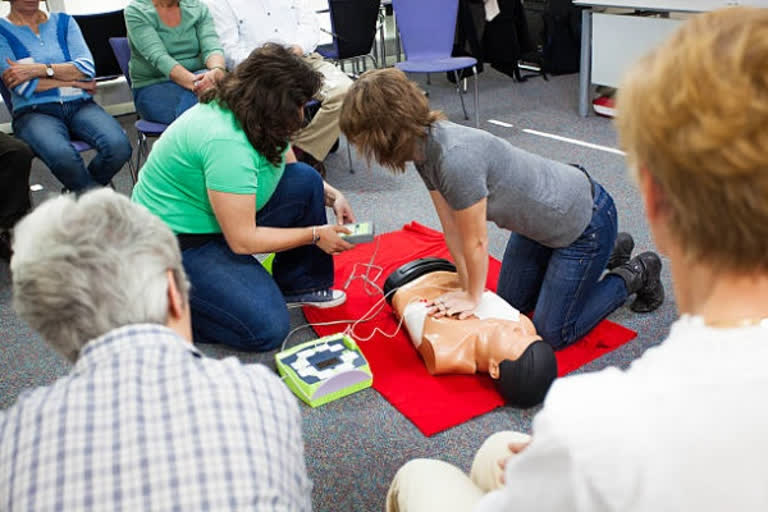New Delhi: Women with Cardiovascular Disease (CVD) have poorer results and are less likely to participate in preventative and rehabilitation programmes than males worldwide. The International Council of Cardiovascular Prevention and Rehabilitation (ICCPR) convened a panel of experts who developed a clinical practice guideline that was endorsed by 24 clinical societies worldwide to provide guidance to the cardiac rehabilitation community on how to deliver more effective women-focused programming.
The findings of the study were published in the Canadian Journal of Cardiology. "Accordingly, 'women-focused' models of CR have been developed to better engage women and optimize their outcomes. There is now sufficient evidence on women-focused CR to make recommendations to the CR community." This ICCPR clinical practice guideline provides guidance to the CR community on how best to design programs for women with CVD, including stroke and Peripheral Arterial Disease (PAD), and how to increase their engagement, with the goal of optimizing women's outcomes (i.e., death, hospitalization, function, psychosocial wellbeing, and quality of life). Cost, resource implications, feasibility, and patient preferences are foremost considerations in the recommendations.
The ICCPR identified women-focused CR researchers through a review of the scientific literature and programs offering women-focused CR around the world as identified through ICCPR's Global Audit. Individuals and programs that consented to participate formed a writing and consensus panel including experts with diverse geographic representation who are multidisciplinary healthcare providers, a policymaker, and patient partners. This group drafted and reviewed the recommendations. The draft then underwent external review from CR societies internationally and was posted online for public comment before finalization. One third of the studies identified in the review that formed the basis for the guideline came from Canada, which is considered to be a leader in women-focused CR.
The guideline presents 15 recommendations relating to referral (i.e., automatic plus encouragement), setting (e.g., choice of delivery mode, environment, tailoring, and staff training), and delivery (e.g., session timing options, preferred form of exercise, psychosocial assessment and care, and education on women and heart disease). When adopted, these recommendations and the associated tools compiled can feasibly support some degree of women-focused CR as part of any program.
Key recommendations are: Women should be systematically referred to CR to reduce bias and encouraged to attend before hospital discharge through two-way fulsome discussion to overcome gender-related barriers. Particular considerations when developing a woman's tailored rehab plan include considering their contextual and full clinical history, such as any mental health and psychosocial issues, menopausal status, frailty, cancer history, and concerns about urinary incontinence, falls risk/osteoporosis, as well as autoimmune conditions.
All programs should offer women-focused programming, comprising as many of the definitional elements of women-focused CR as possible. Where resources are limited, this could include offering, for example, some women-only virtual education or exercise sessions or peer support programs. Women should be given a choice in participating in a center-based (clinical or community) or home-based setting, delivered in a women-friendly environment, and their needs/preferences should be taken into consideration when formulating their programs.
Also read: Indian women hesitate to invest in Menstrual Hygiene Products
Programs should include a strong psychosocial component, choice of exercise modalities, as well as specific education on women and CVD. The psychosocial needs of women should be assessed and addressed in an evidence-based manner (e.g., social support, relationship health, depression, anxiety, stress, socioeconomic issues, informal caregiving activities).
"For the first time, there are a consensus definition and recommendations for women-focused CR, so it is hoped now that many programs will incorporate these elements into their programs," said Prof. Grace. "If implemented, more women may engage in CR, and as a result have significantly greater quality and quantity of life."
"The ICCPR acknowledges that across the globe women have experienced worse outcomes from CVD and worse uptake to prevention and rehabilitation programs," commented Robyn Gallagher, MN, PhD, Chair, ICCPR, and Sydney Nursing School, Faculty of Medicine and Health, The University of Sydney, Sydney, Australia. "The Women-Focused Cardiovascular Prevention and Rehabilitation Clinical Practice Guideline provides recommendations that will help clinicians and health service designers to develop and deliver programs that address this inequity for women, regardless of resource contexts."
CVD is the leading cause of death among women globally with a prevalence of over 6,400 cases per 100,000. While the global CVD burden has decreased since 1990, it has increased in many African, Asian as well as Western-Pacific countries, and the global decline in prevalence has stagnated since 2010. Fewer women with CVD receive diagnostic tests, secondary prevention drugs, and revascularization procedures compared with men. (ANI)



